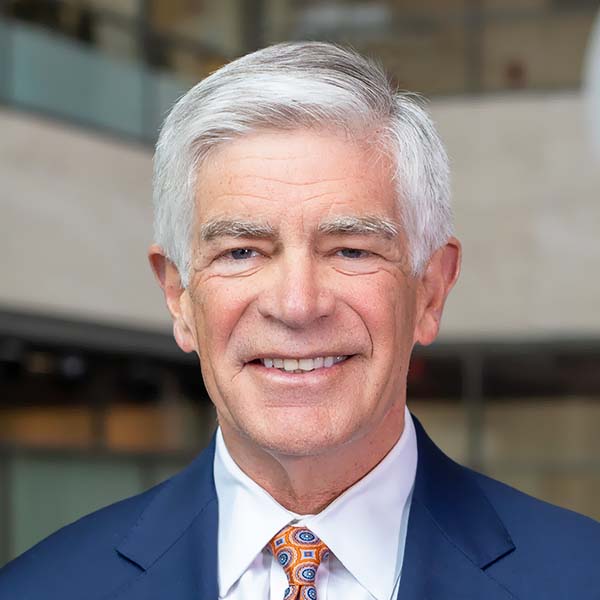Good afternoon! It’s great to be back with this group. I’m really looking forward to our discussion today — especially the Q&A portion. And given that you’re an audience of CFAs, I’ve come expecting some really tough, forensic questions, such as … what on Earth is going on with the Phillies?
Today I’d like to offer you a few thoughts on where we are economically. I also plan to talk a bit about how we can build a more equitable and sustainable economy as we recover from the pandemic.
But before we do that, I need to give you my standard Fed disclaimer: The views I express today are my own and do not necessarily reflect those of anyone else on the Federal Open Market Committee or in the Federal Reserve System.
Economic Outlook
Setting the Phillies aside, I’m pleased to note that there is a palpable sense of optimism as we convene. Last year and the early part of 2021 were really, really tough — and tragic for millions of Americans — but things have noticeably begun to turn around in our area and across the country.
Economic data like employment, housing, and manufacturing figures came in stronger over the last couple of months than many of us — myself included — expected. And recent spending data have once again provided a reminder to never bet against the American consumer. In March alone, consumer spending — a component of GDP comprising around 70 percent of the nation’s total economic output — surged 4.2 percent.
We can credit increased vaccinations, falling COVID-19 case rates, and a huge dose of fiscal stimulus for the reviving national economy. We’re digging out of a very deep hole — and we have a long way to go — but for now, I’m anticipating national GDP growth to come in around 7 percent for 2021, before moderating to 3 percent growth next year.
There are, of course, downside risks, including vaccination hesitancy that precludes true herd immunity as well as the possibility of new COVID-19 variants that render the vaccines less efficacious. The tragic situation in India is a reminder that even as the situation in the U.S. improves, much of the world is still in the worst throes of the pandemic.
Closer to home, there is no doubt that the cash Congress appropriated to Americans through the Paycheck Protection Program and the more than $3,000 in direct payments to the majority of U.S. households has helped buoy consumer spending during the pandemic.
In some cases, that meant literal cash — one of our contacts who owns a network of gas stations and convenience stores reported needing extra armored car runs during the week the latest round of stimulus checks arrived to keep up with demand at his ATMs. Here at the Fed, we’re also starting, once again, to deal with increased demand for coins. So I hope there aren’t too many of you who need quarters to do your laundry; it could be challenging for a while to find them …
Other Americans have squirreled away what they’ve received. The household savings rate is up sharply, and in March, it was at the second-highest rate on record — 27.6 percent. And others are paying down debt at a rapid clip; bankers have told us that there are clearly some who are struggling with loans and forbearance, but that many of their clients are using this period to catch up on payments they may have fallen behind on.
All of this is setting the table for a recovery that could be long and durable.
The Labor Force Recovery
It’s important to note that the recovery in GDP has so far outpaced the rebound in the labor force. The level of employment is still more than 8 million below the prepandemic peak, and that doesn’t account for the roughly 200,000 in monthly gains we probably would have seen without COVID-19. April’s jobs report, which came in at only 266,000 new jobs, was extremely disappointing.
Given that the underlying fundamentals of the economy look so strong, April’s numbers were probably an outlier, however, and I expect job creation to pick up in the coming months. At this point, I anticipate the labor force returning to its prepandemic trend sometime next summer.
There are myriad reasons that the employment rebound is slightly lagging other indicators. Some are salutary: During the pandemic, firms became more productive and learned to do more with less. A more productive economy benefits all of us in the long run.
But other people may have some hesitancy about returning to the workplace until they get vaccinated, and they’re convinced their coworkers are vaccinated. There’s also great inconsistency across industries; in the service sector, hospitality and tourism jobs are still down significantly because their business has yet to return in significant numbers.
Another factor that has driven far too many talented people out of the workforce is a dearth of childcare options.
There is a real economic cost that all of us incur when people — and let’s be frank, mostly mothers — leave the labor force because they can’t find an affordable option for taking care of their kids during the workday.
Like quality education, affordable childcare is not merely a “nice to have” — it’s an economic necessity.
In Delaware, for instance, it now costs the median-earning family 20 percent of their income to pay for the care of a child under 5 years old. That’s a heavy burden — even before COVID-19 shuttered many schools and childcare centers, further straining families.
Making childcare more affordable is a complex issue but one that surely requires our attention. Already, one of the most oft-cited reasons couples give for having fewer children than they say they want is the cost of raising them.
My colleagues at the Minneapolis Fed have found that, at the outset of the pandemic, many parents of young children left the labor force — 3.4 percent of fathers and 2.9 percent of mothers dropped out altogether. But in the ensuing year, most fathers have returned to the labor force, while the participation rate of mothers of young children is still down 2.8 percentage points from before the pandemic. That is a lot of human capital lying untapped. The Philadelphia Fed, in partnership with the Delaware Chamber of Commerce, is piloting a Research in Action Lab focused on providing childcare options precisely because of this issue.
For now, Fed policy is going to hold steady.
We’ll keep the federal funds rate very low and continue making more than $100 billion in monthly Treasury bond and mortgage-backed securities purchases. While the economic situation is improving, recovery is still a work in progress, and there’s no reason to withdraw support yet.
With so much fiscal support and monetary accommodation, there is some upside risk to increased inflation, and we will continue to monitor that closely. But for now, I’m forecasting 2.3 percent headline inflation for 2021 with core inflation at 2 percent.
The Occupational Mobility Explorer
Lastly, before we move to the Q&A, I’d like to take a moment to tell you a little bit about a new tool the Philadelphia Fed recently launched that I think you will find very interesting — and important.
One of the ways we can ensure that the coming recovery is both equitable and durable is to get more people into middle-class jobs. And so, the tool came out of the work done by researchers at the Philadelphia Fed and the Cleveland Fed who began by asking a question: How do we transition workers in low-paying, unstable jobs into what we call opportunity occupations — jobs that pay above the median wage and that don’t require a college degree.
They came up with an ingenious idea: They looked at the skill sets of the people who currently hold those low-opportunity jobs. They then matched those skills to jobs that would pay at least 10 percent more than their current wage and that don’t require a traditional four-year degree.
The findings were incredibly encouraging. Looking at 33 metro areas nationwide, they found that nearly half of lower-wage employment can be paired with at least one higher-paying occupation requiring similar skills. For transitions connecting the most similar occupations identified in the study, the pay differences are significant, with an average bump in wages of almost $15,000 — a 49 percent increase in salary.
We’ve recently launched an interactive online tool — the Occupational Mobility Explorer — to help workers and employers make those transitions. Once you are in Explorer, you can select your geographic location and current occupation, and you will find a variety of jobs that require similar skills and pay at least 10 percent more in wages.
For example, receptionists here in the Philadelphia area will find that they possess many of the skills necessary to become a medical secretary, a job that pays about 27 percent more — on average, a bump in salary from around $30,000 to $38,000.
Bill collectors in the Philadelphia area could boost their salary 45 percent, from an average of about $38,000 to nearly $55,000 by becoming a credit counselor — with the added bonus that people will actually want to answer the phone when you call.
The tool can also be used by workforce development practitioners, community colleges, and, of course, the general public. It can help with reskilling programs, employee recruitment, and hiring practices as millions of workers seek to reenter the job market as we emerge from the pandemic. There’s a lot of talent out there that we as a society would be foolish to leave on the sidelines.
So, thanks so much again for having me. And now I’m happy to take some questions.
View the Full Speech
